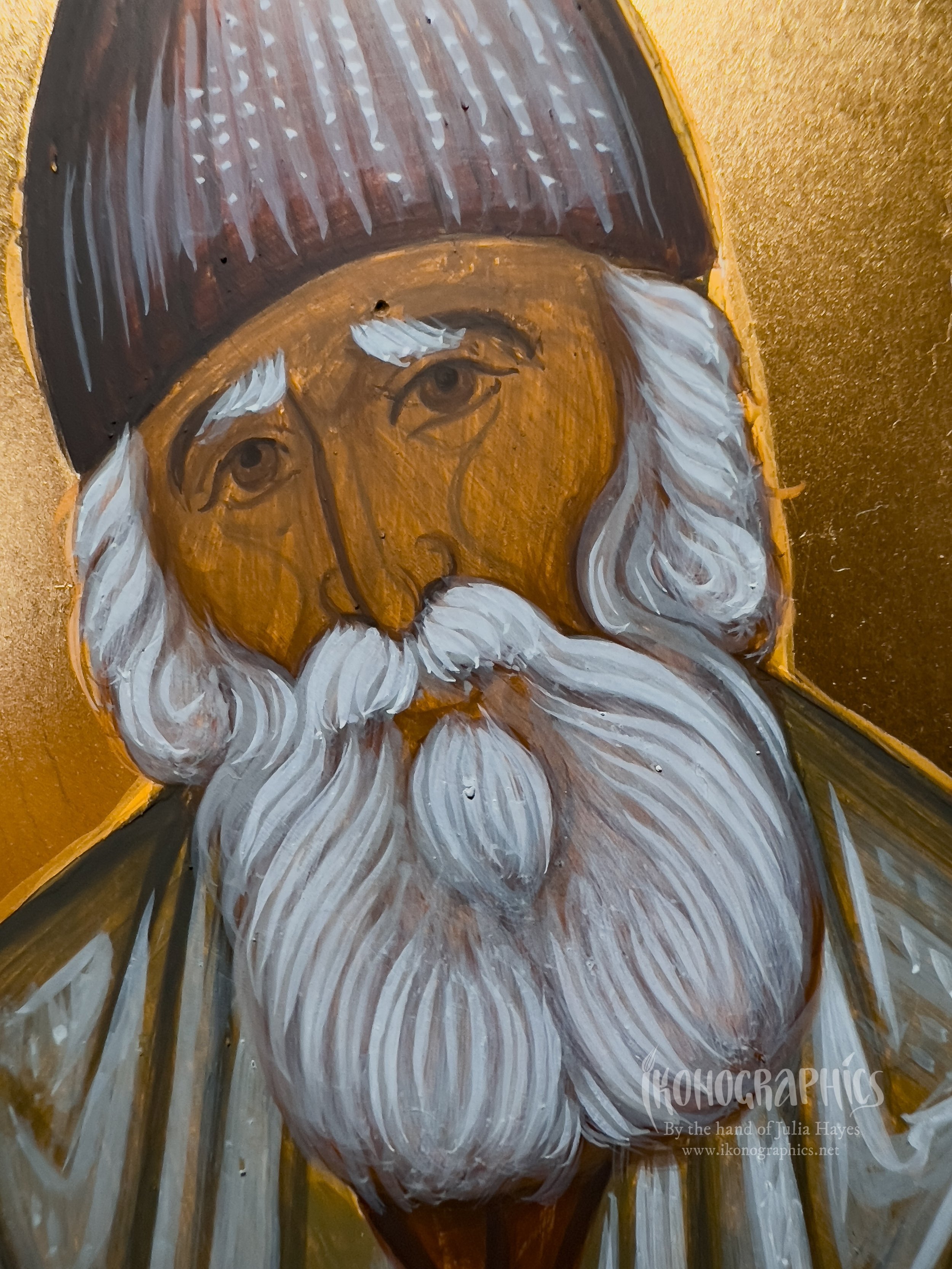Painting St Paisios: Face and Beard
In this blog tutorial we will continue painting the icon of St Paisios that we started here with his garments.
Face Proplasmos and 1st Grapsimo
We cover the face, hair and beard in the same proplasmos make from yellow ochre, mars red and black.
We make the first grapsimo with mars red and a little black to create a brown colour with which we paint in the facial features and beard and build it up in the darker areas, blending into the proplasmos.
2nd Grapsimo
For the 2nd grapsimo we add some black to the 1st and again define the darkest areas and blend into the 1st grapsimo.
3rd Grapsimo
For the 3rd grapsimo we add some black to the 2nd and again define the darker areas or the iris, the eyelid, eyebrows, nose and beard, this time without blending into the 2nd.
Darkest Details
We then add some more black for the fine lines on the eyebrows, the upper eyelids, the pupils of the eyes and the nostrils
Hair Proplasmos (Glaze)
For the hair proplasmos we take a little face proplasmos and add white and black until we get a warm grey colour. We take some of that and create a glaze by diluting it with egg emulsion and water. We paint this in a thin layer over the hair and beard.
1st Photisma
Now taking the undiluted colour that we mixed we start creating the forms of the hair and beard.
2nd Photisma
For the 2nd Photisma we add some white to the hair proplasmos and build up the forms within those we created with the hair proplasmos.
2nd Photisma Glaze
Now we dilute some of the 2nd photisma with egg emulsion and water to create a glaze which we use to unite the forms in the lighter areas so that there isn’t a harsh contrast.
3rd Photisma
For the 3rd Photisma we take white and build up the forms within the 2nd photisma only on the broader/lighter side of the face, giving the face dynamic movement towards the viewer. I have also used it to paint the wispy hairs and the white of the eyes.
Cool Glaze
We paint a diluted glaze made of yellow ochre, white and a touch of black on the lightest parts. It forms a cool transition between the proplasmos and the 1st flesh.
1st Flesh
The 1st Flesh is made with yellow ochre and white. You can also add a touch of mars red.
2nd Flesh
The 2nd flesh is made with the 1st flesh and white. It is built up within the 1st flesh slowly building up the volume of the forms.
Warm Glaze and 3rd Flesh
The warm glaze is made with diluted mars red and yellow ochre and painted on the darker side of the face and nose creating a transition between the 1st flesh and the proplasmos. It is the contrast between the warm and cool glazes that brings the flesh tones to life. It is also painted on the lower lip, cheeks, and eyelids.
The 3rd flesh is made with the addition of white to the 2nd and is built up with in the 2nd.
1st Psymithia
The first psymithia are made with 3rd proplasmos and white and are painted in the lightest areas within the 3rd proplasmos on the lightest parts of the face.
2nd Psymithia
The 2nd and final psymithia are pure white and are painted within the 1st psymithia only in the very lightest areas on the broad side of the face.
Glory to God!
Are you interested in learning Byzantine Iconography? Learn more about my tutorials on Patreon and Udemy















